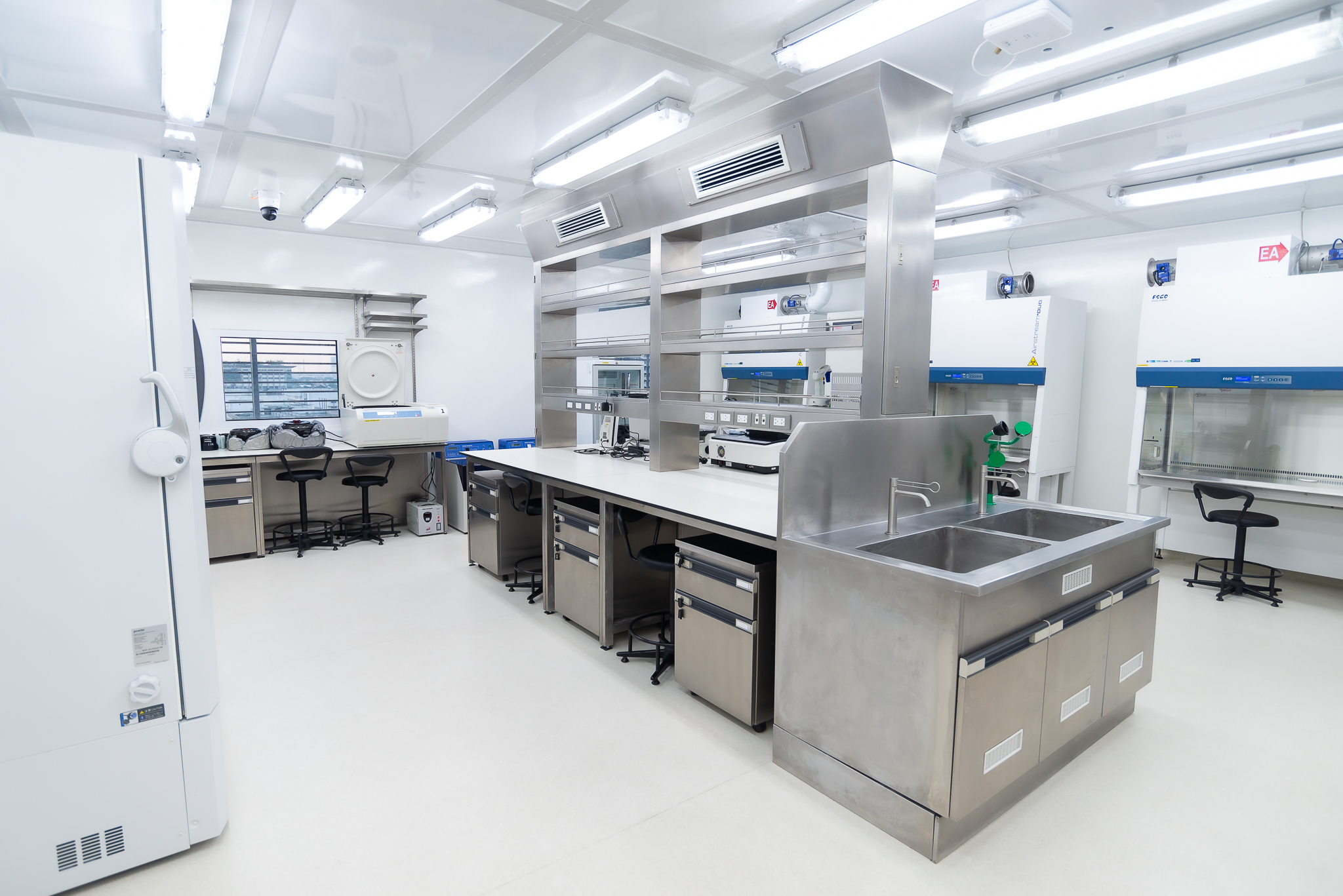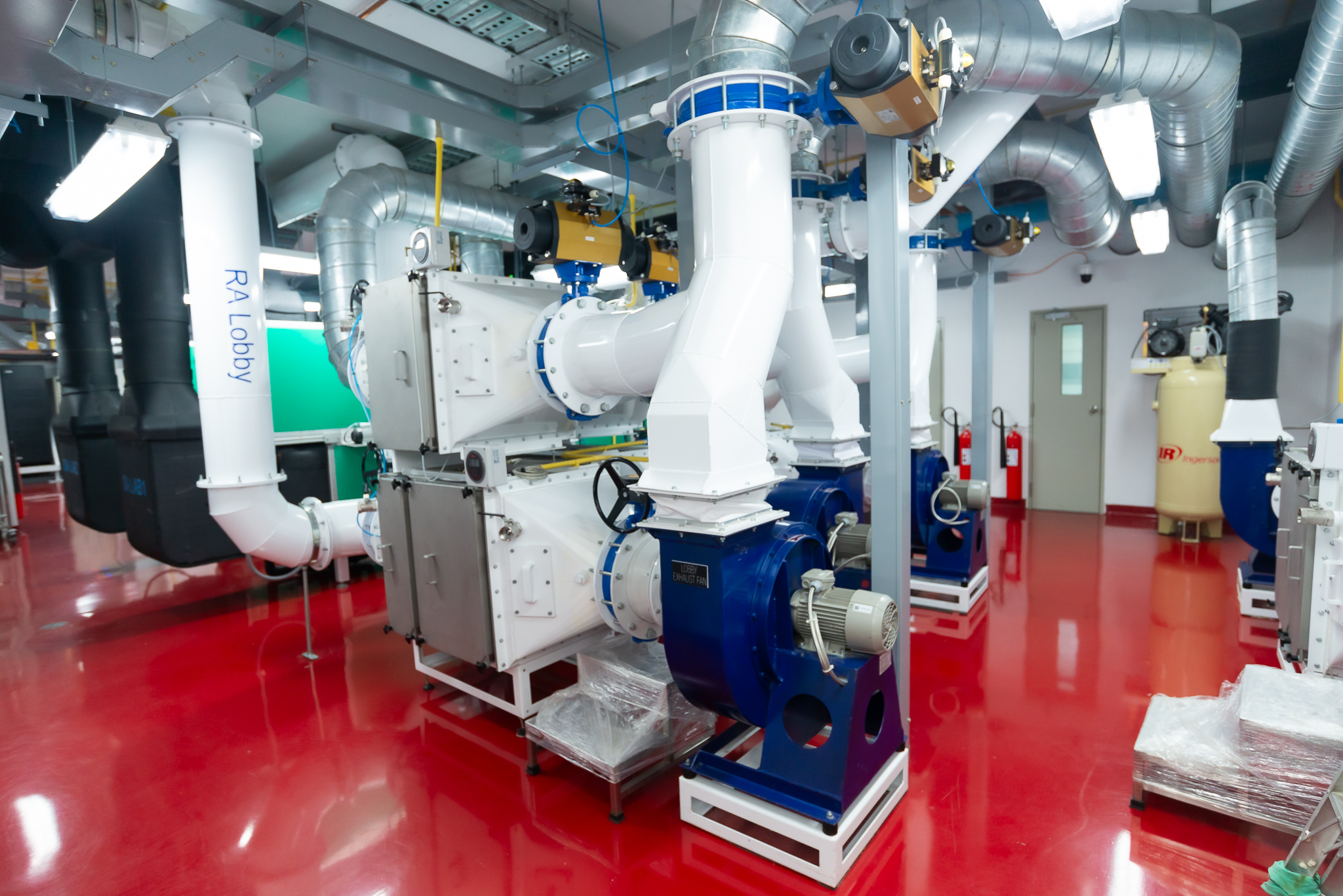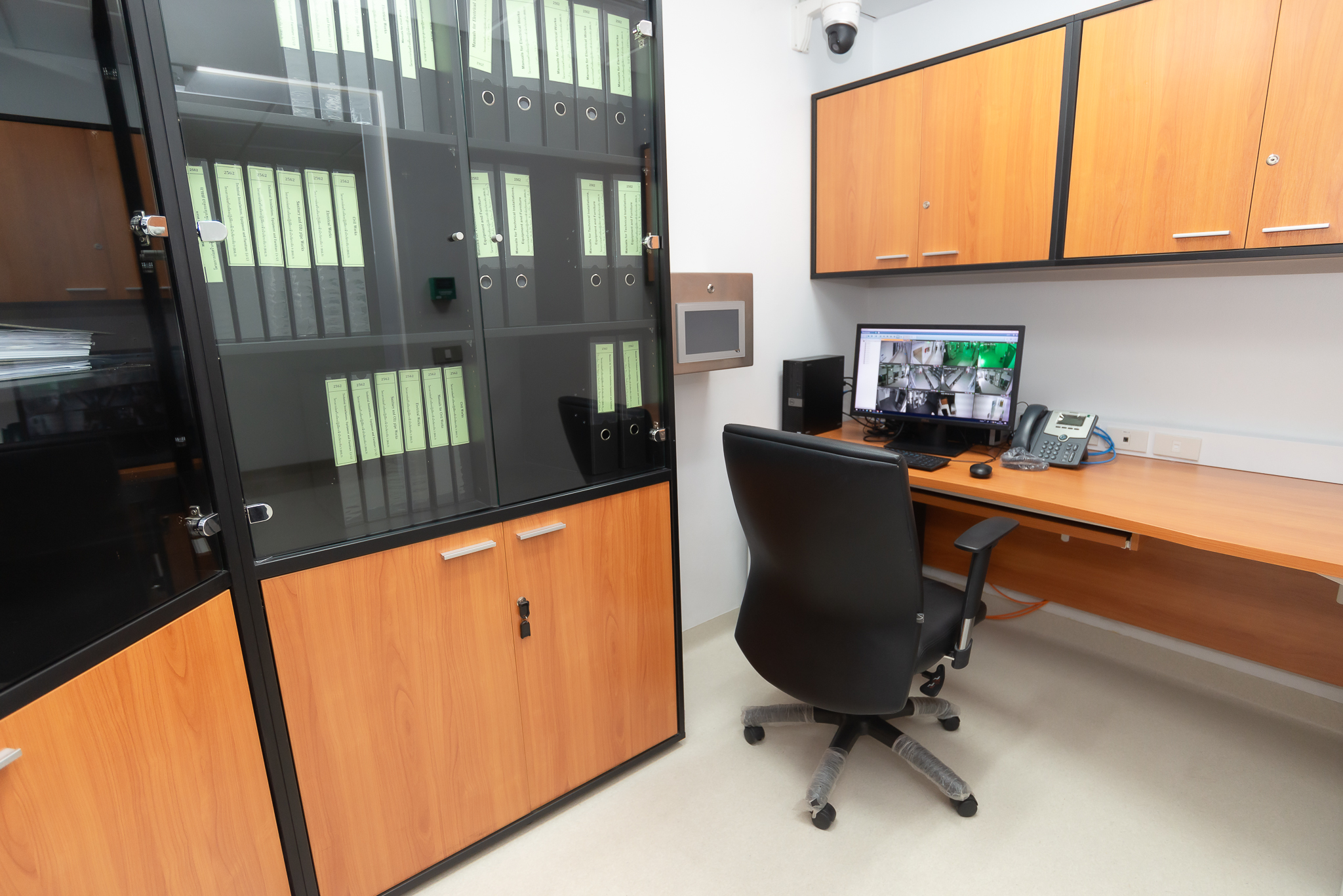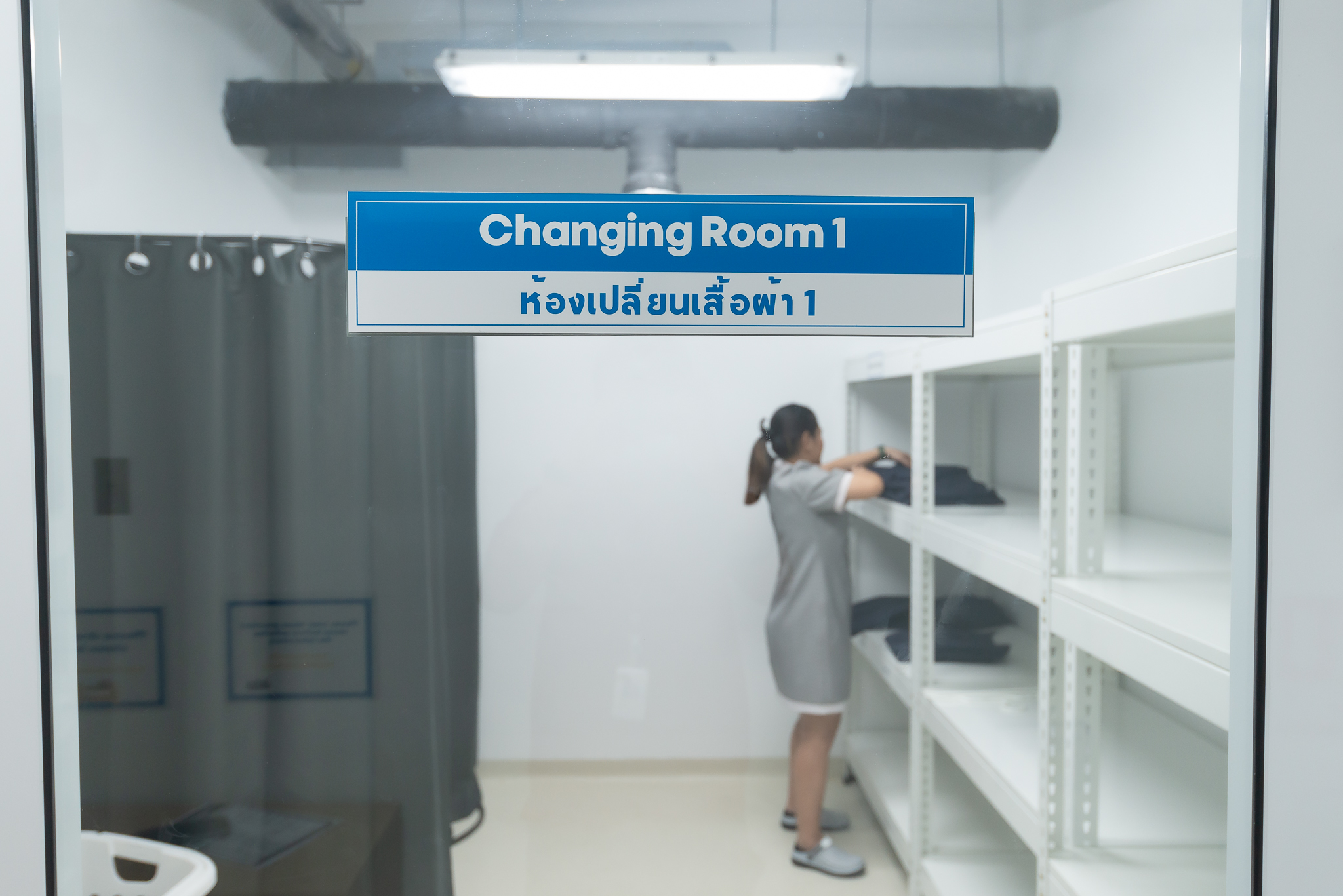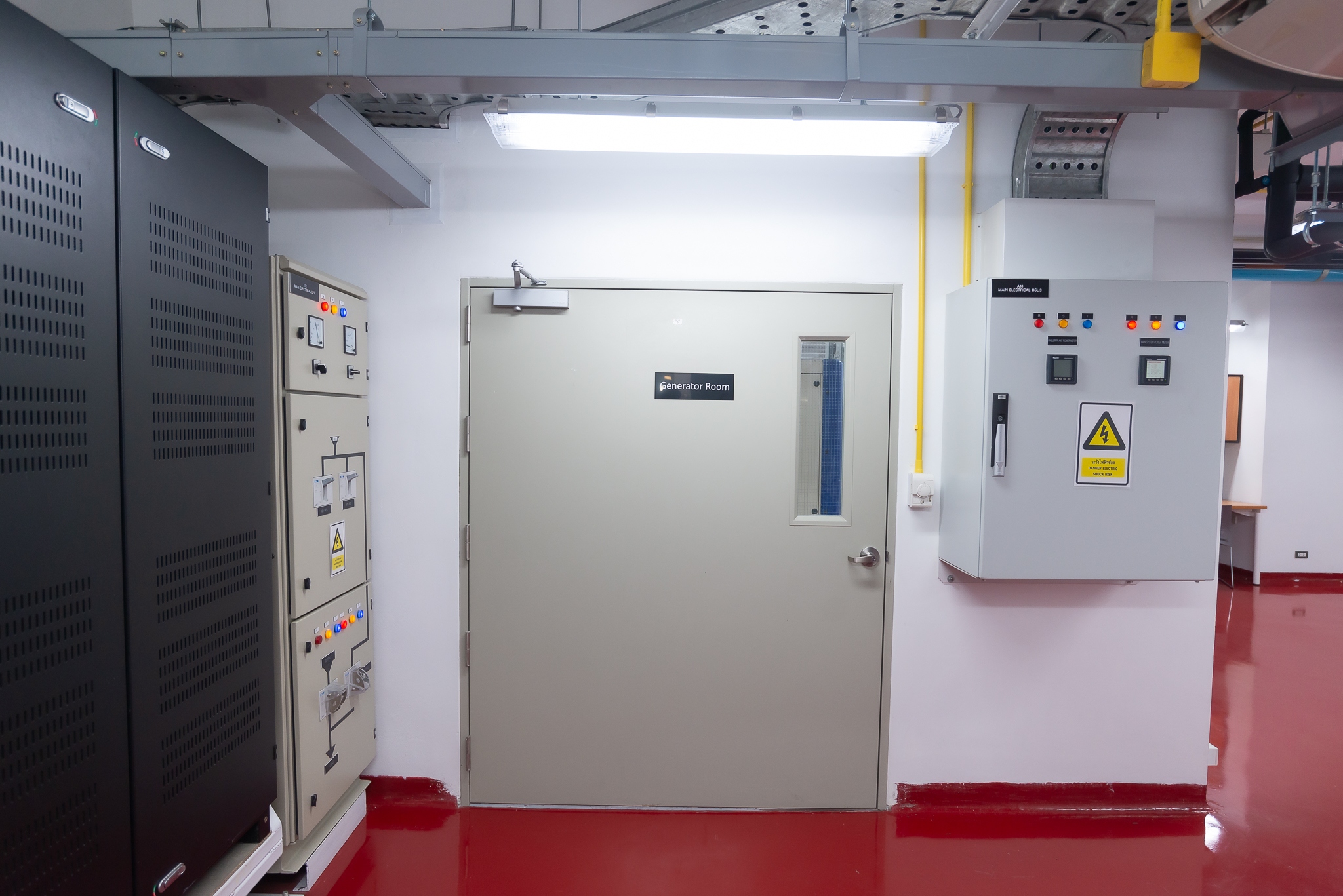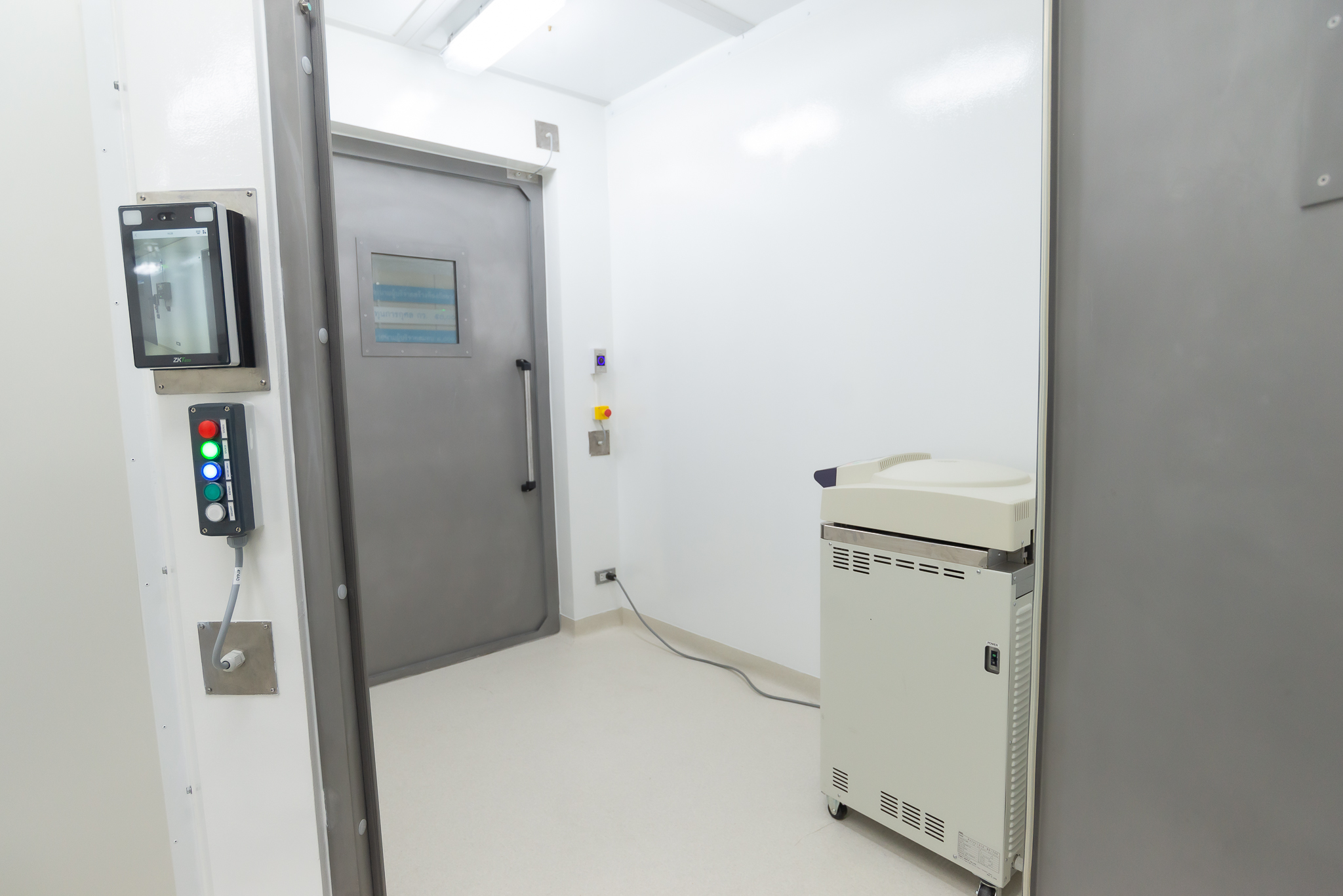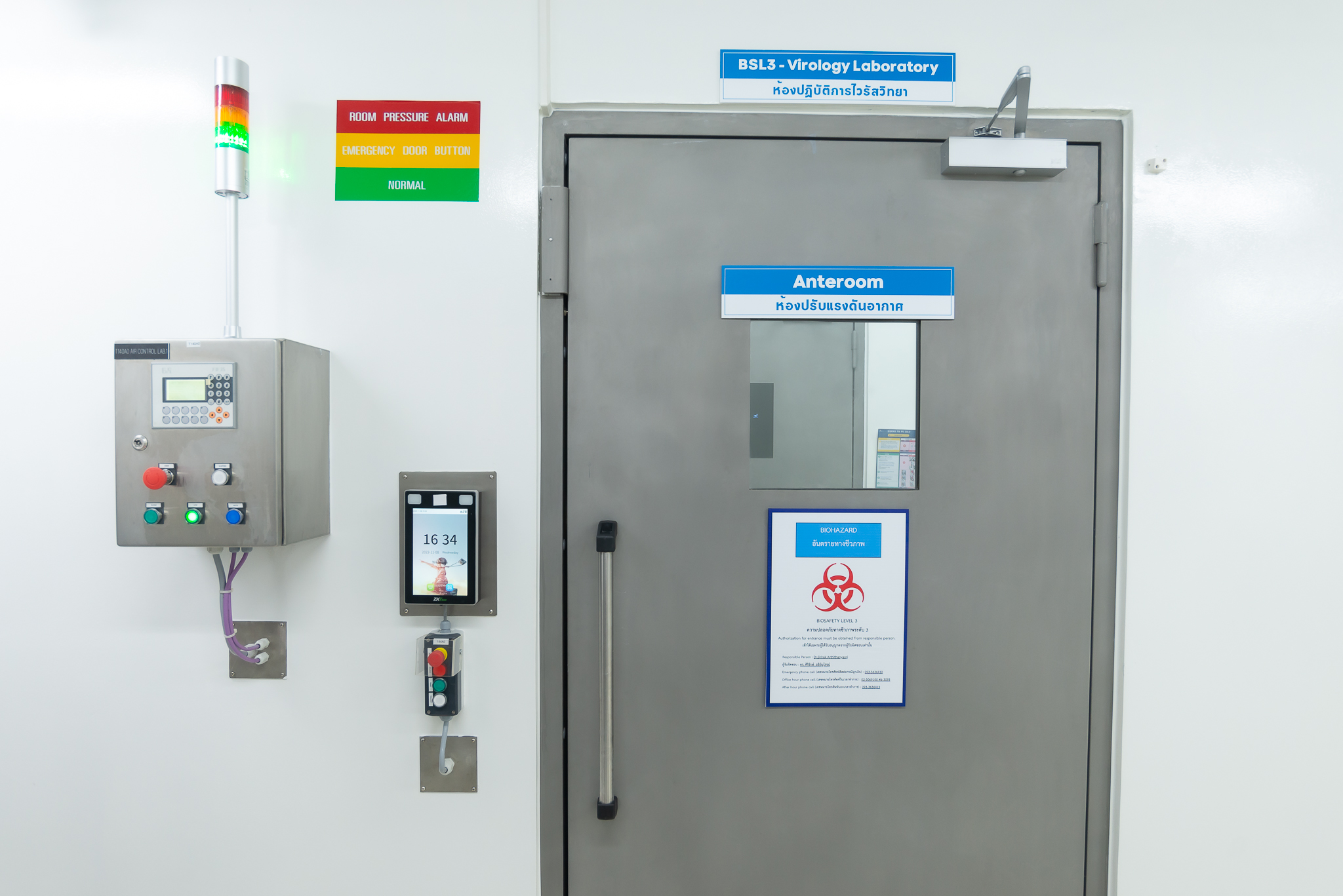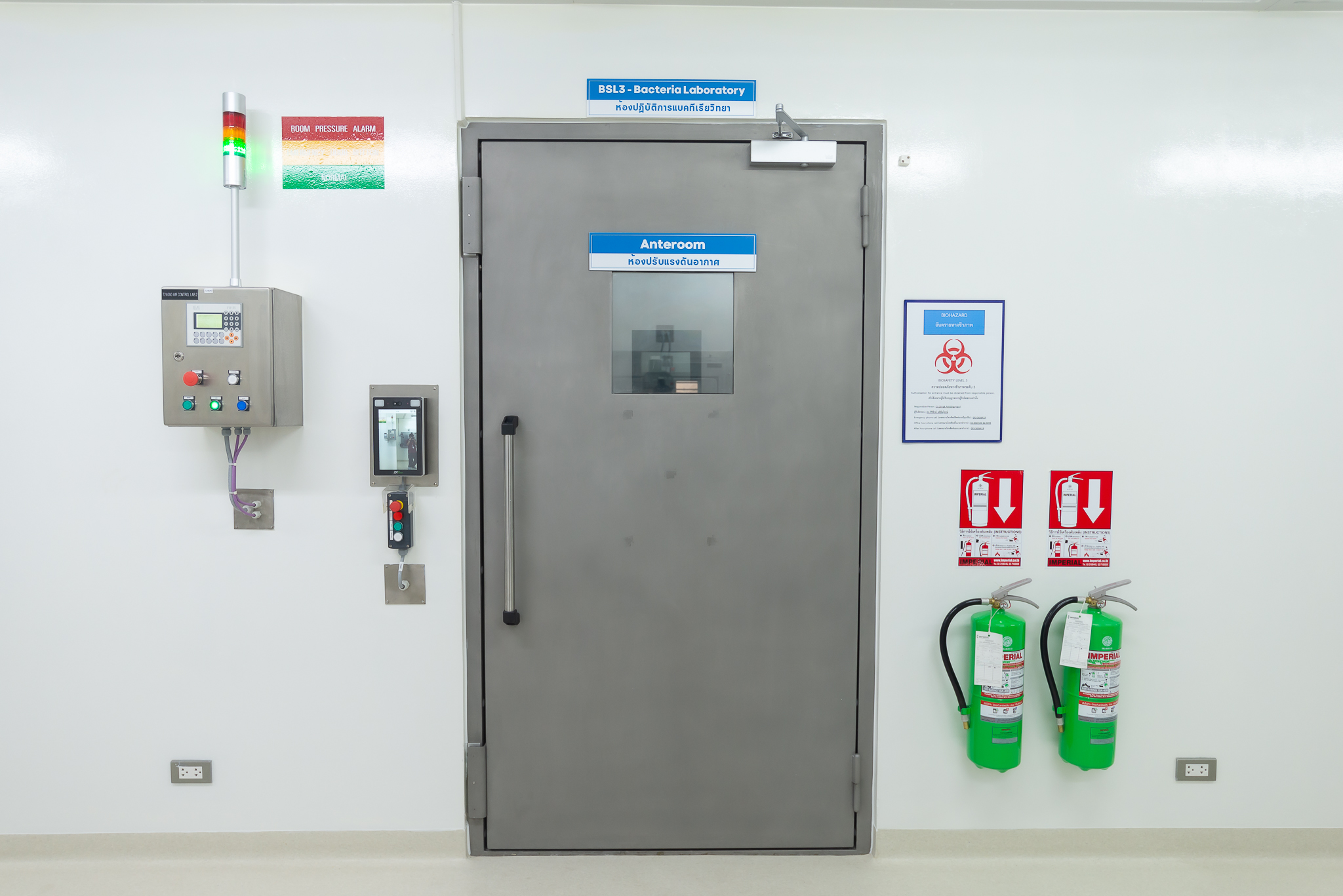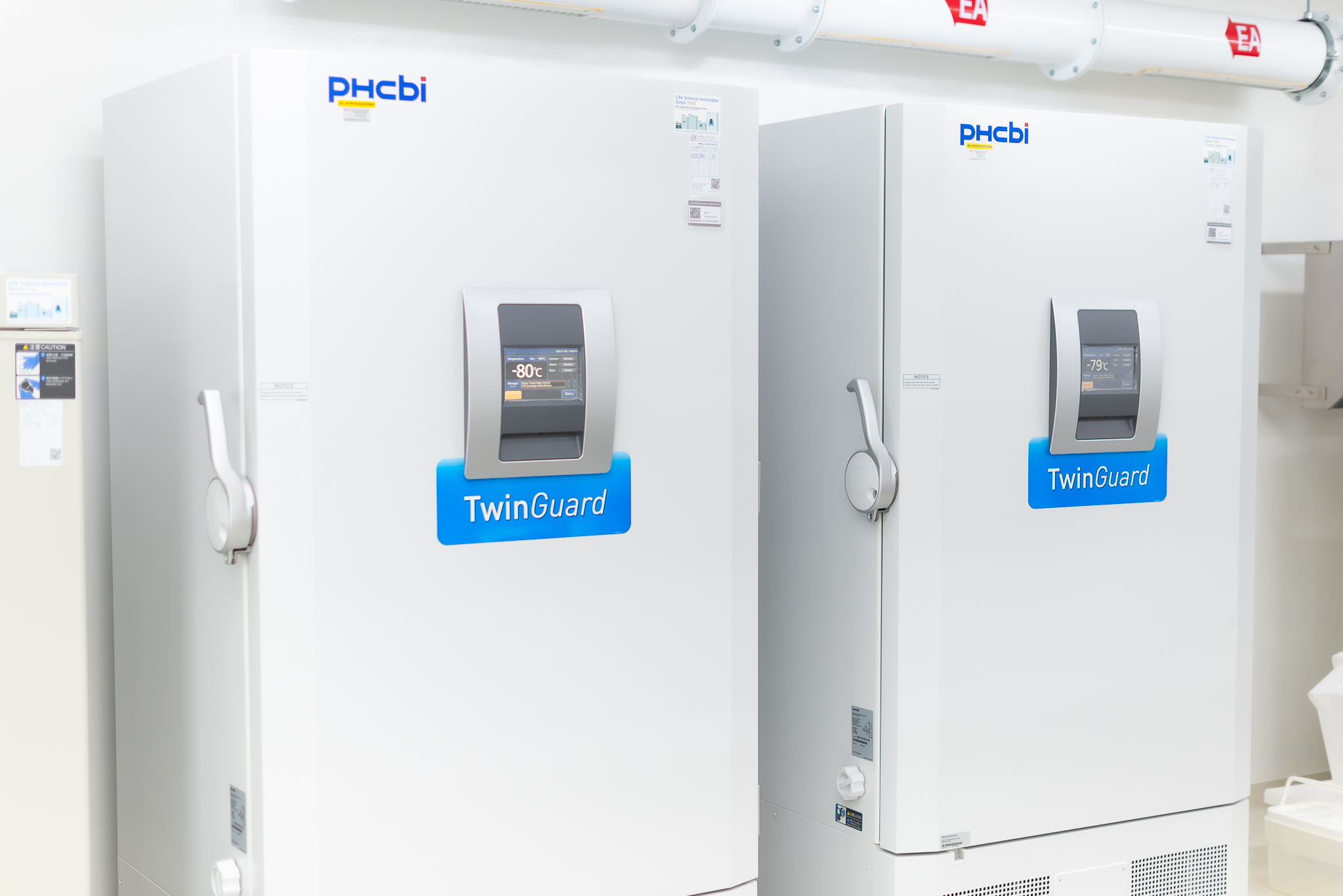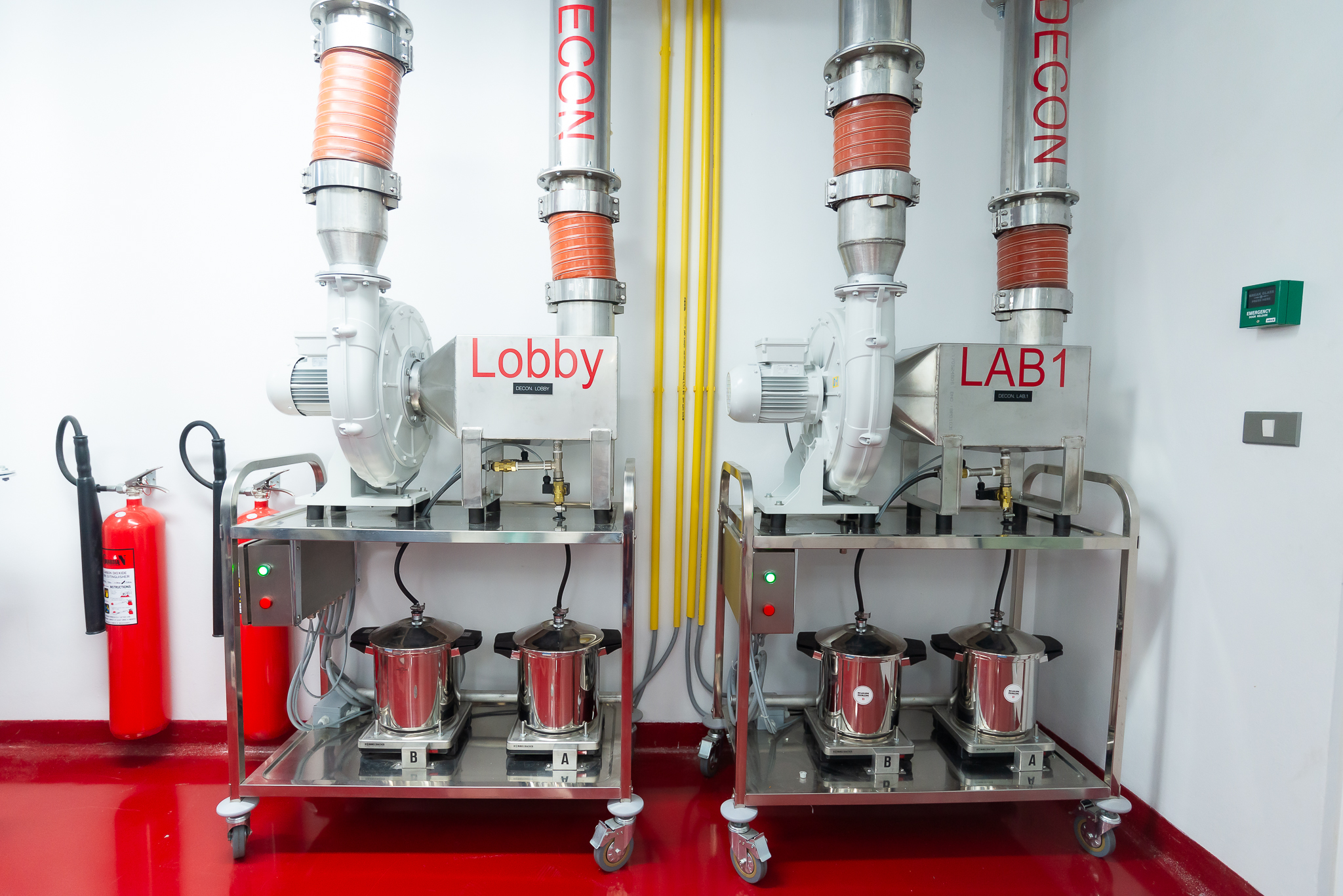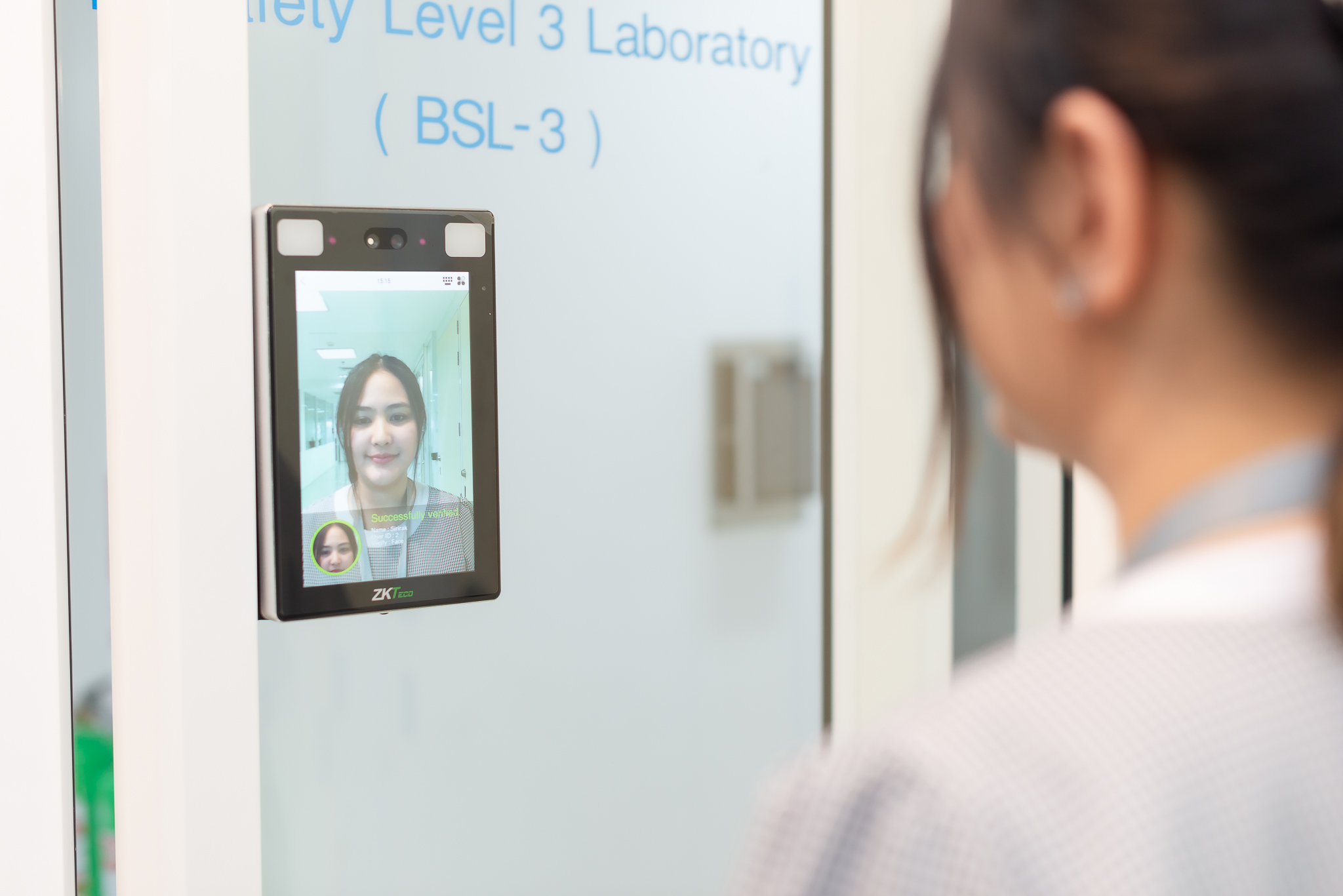About
Biosafety Level 3 (BSL-3) laboratory has been constructed on the 9th floor of the Ratchanakarin Building, the Faculty of Tropical Medicine, Mahidol University. The FTM BSL-3 laboratory which area has 504 m3, has special engineering and design features. It includes unidirectional airflow using pressure gradients of negative. It requires a specialized facility with an anteroom/airlocks leading into two FTM BSL-3 containment laboratory for working with virus (BSL-3 virus facility) and bacteria (BSL-3 bacteria facility).
Each BSL-3 containment laboratory consists of four biosafety cabinets (BSCs) and scientific equipment that can support four operations simultaneously at the same time. Access into the FTM BSL-3 facility is restricted to the authorized personnel and controlled by face ID and Code.
ห้องปฏิบัติการชีวนิรภัยระดับ 3 (BSL-3) ที่ตั้งอยู่ ณ ชั้น 9 อาคารราชนครินทร์ คณะเวชศาสตร์เขตร้อน มหาวิทยาลัยมหิดล มีพื้นที่กว่า 504 ตารางเมตร ประกอบด้วย ห้องควบคุมระบบ ห้องควบคุมความดันอากาศ (Air lock) ที่เป็นประตู 2 ชั้น ห้องสำหรับการจัดการของเสียติดเชื้อ และห้องปฏิบัติการ จำนวน 2 ห้อง ที่แยกตามประเภทของงาน ได้แก่ ห้องปฏิบัติการไวรัสวิทยา และห้องปฏิบัติการแบคทีเรียวิทยา โดยภายในห้องปฏิบัติการ มีเครื่องมือที่ใช้ควบคุมความปลอดภัยทางชีวภาพ เช่น ตู้ชีวนิรภัยคลาส 2 จำนวน 8 ตู้ ที่สามารถรองรับการปฏิบัติงานได้ในเวลาเดียวกัน และอุปกรณ์วิทยาศาสตร์ที่ทันสมัย
การเข้าปฏิบัติงาน ภายในห้องปฏิบัติการชีวนิรภัยระดับ 3 จะถูก ควบคุมการเข้า-ออก ที่เข้มงวดเป็นพิเศษด้วยเทคโนโลยีการสแกนใบหน้าหรือการใช้รหัสผ่านผ่านระบบ RFID เพื่อให้เป็นไปตามมาตรการการรักษาความปลอดภัยทางชีวภาพ (Biosecurity) เช่น การเข้าถึงสารชีวภาพ และไปใช้ในทางที่ไม่ถูกต้อง ซึ่งอาจก่อให้เกิดอันตรายต่อคน สัตว์ และสิ่งแวดล้อม
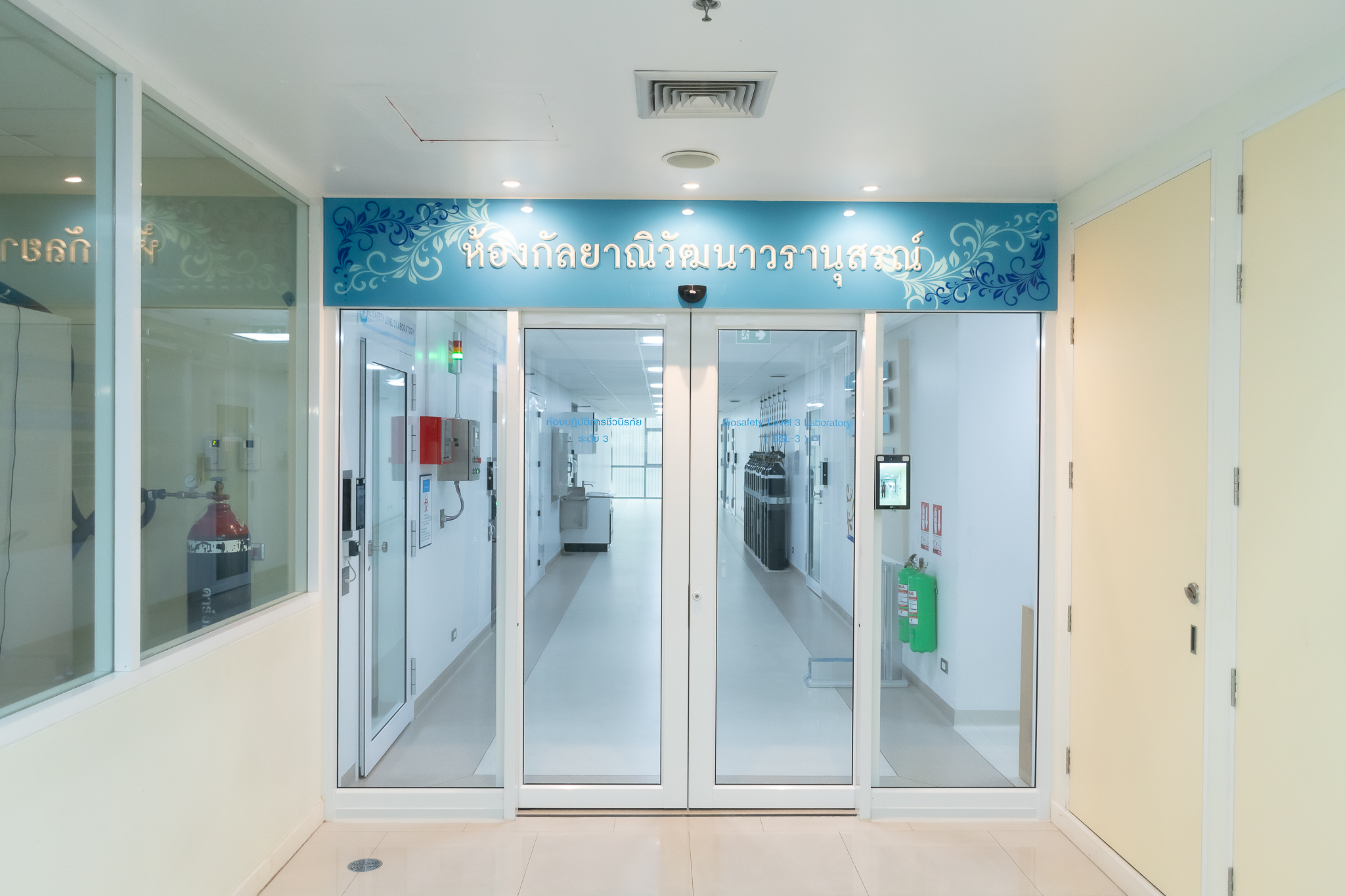
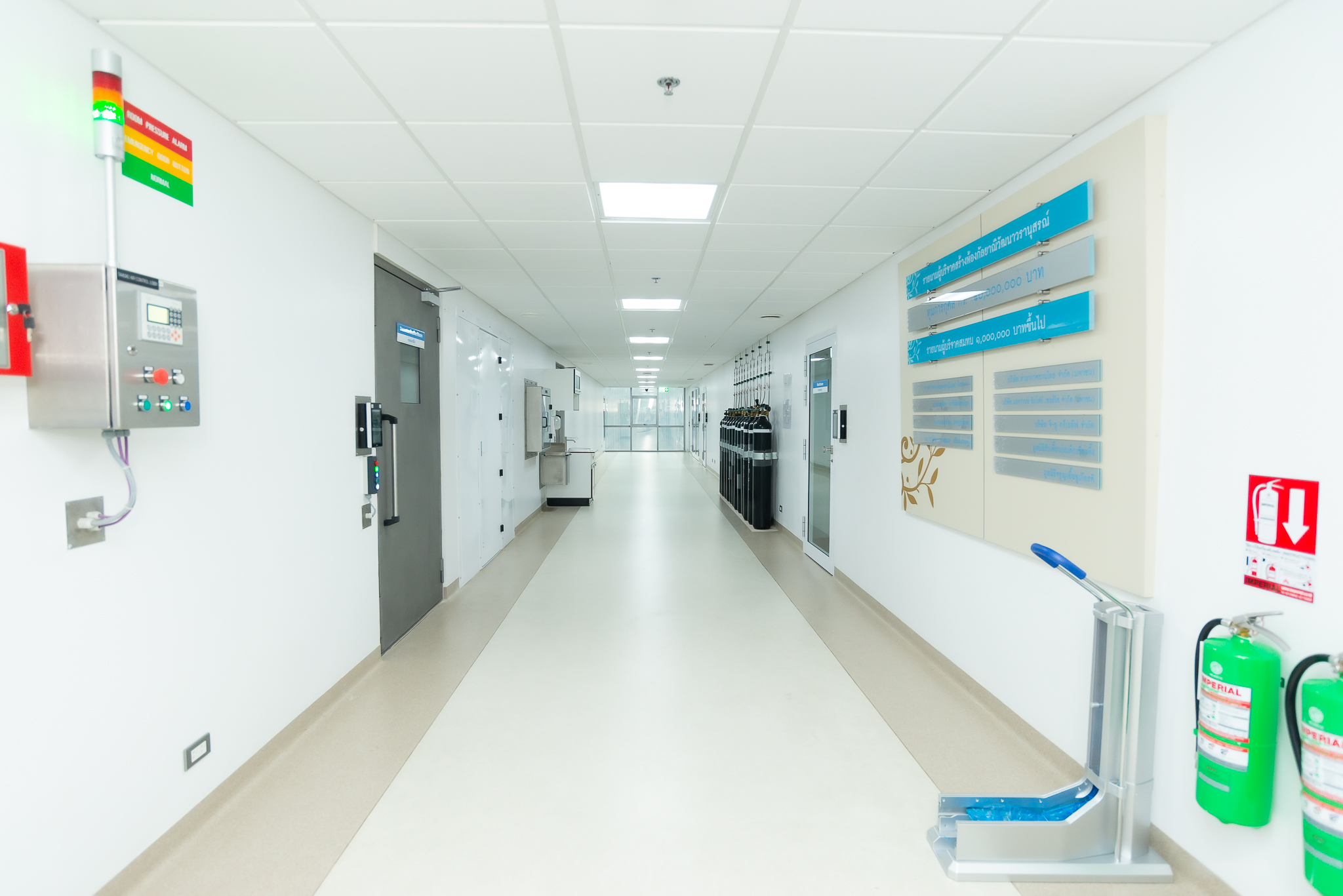
Facility
Biosafety Level 3 (BSL-3) laboratory has special engineering and design features and includes unidirectional airflow using pressure gradients of negative. It requires a specialized facility with an anteroom/airlocks leading into two FTM BSL-3 containment laboratory for working with Virus (BSL-3 virus facility) and Bacteria (BSL-3 bacteria facility).
Other rooms are locker room, changing room (Changing Room 1 and Changing Room 2), preparation room decontamination chamber room, plant room and monitor room
The anteroom is located between the FTM BSL-3 facility and the clean corridor outside the bio-containment space which can serve as an access zone for the internal FTM BSL-3 facility. The anteroom is typically negative to the clean corridor. The anteroom provides a dedicated entry and exit for the facility, a gowning area, storage and other functions that support the work in the FTM BSL-3 facility.
The scientific equipment in each FTM BSL-3 facility includes CO2 incubator (4 units), -800C freezer , 40C refrigerator, refrigerated centrifuges, inverted microscope, and autoclave. Bench, storage shelving and other related equipment are provided. There is also a system to track the real time temperature of the freezer, used for storing hazardous biological substances and there is a notification to controller whenever there is a malfunction of the tool.
ห้องปฏิบัติการชีวนิรภัยระดับ 3 คณะเวชศาสตร์เขตร้อน มหาวิทยาลัยมหิดล (BSL-3) มีคุณสมบัติทางวิศวกรรมและการออกแบบพิเศษ ประกอบด้วยการไหลเวียนของอากาศในทิศทางเดียวและความดันอากาศที่เป็นลบ (Negative Pressure) ซึ่งถูกออกแบบพิเศษโดยมีห้องควบคุมความดันอากาศ (Air lock) เป็นระบบประตู 2 ชั้นก่อนเข้าสู่ห้องปฏิบัติการ ซึ่งประกอบด้วยห้องปฏิบัติการที่มีรูปแบบการทำงานที่แตกต่างกัน จำนวน 2 ห้อง ได้แก่
- ห้องปฏิบัติการไวรัสวิทยา
- ห้องปฏิบัติการแบคทีเรียวิทยา
ภายในยังประกอบด้วยห้องอื่นๆ เช่น ห้องล็อกเกอร์ (Locker room) ห้องเปลี่ยนเสื้อผ้า (ห้องเปลี่ยนเสื้อผ้า 1 และห้องเปลี่ยนเสื้อผ้า 2) ห้องเตรียมตัวอย่างและอุปกรณ์ (Preparation room) ห้องฆ่าเชื้อสำหรับขยะติดเชื้อ (Decontamination room) ห้องเครื่อง (Plant room) และห้องควบคุมการทำงาน (Monitor room)
Anteroom หรือห้องปรับแรงดันอากาศ โดยอยู่ระหว่างห้องปฏิบัติการ BSL-3 และทางเดินสะอาดด้านนอก (Lobby) ซึ่ง Anteroom เป็นทางเข้าเพื่อปรับแรงดันก่อนเข้าสู่ห้องปฏิบัติการ BSL-3 ภายใน ซึ่งมีความดันที่แตกต่างกัน และ Anteroom ยังเป็นบริเวณที่รองรับสำหรับการถอดอุปกรณ์ปกป้องส่วนบุคคล (PPE) และจัดเก็บอุปกรณ์ปกป้องทางเดินหายใจแบบจ่ายอากาศบริสุทธิ์ (PAPR) อีกด้วย
อุปกรณ์ทางวิทยาศาสตร์ในห้องปฏิบัติการ BSL-3 ทั้ง 2 ห้อง ประกอบด้วย CO2 incubator (4 ตัว), ตู้แช่แข็ง -80 °C, ตู้เย็น 4 °C, เครื่องปั่นเหวี่ยง (Refrigerated centrifuges) กล้องจุลทรรศน์แบบหัวกลับ (Inverted microscope) และ หม้อนึ่งความดันไอน้ำ (Autoclave) นอกจากนี้ยังมีระบบติดตามอุณหภูมิตู้แช่แข็งแบบ Real-time สำหรับจัดเก็บสารชีวภาพที่เป็นอันตรายและมีการแจ้งเตือนไปยังผู้ดูแลทุกครั้งที่เครื่องมือมีการทำงานผิดปกติ
System
- A CCTV system: CCTV is installed at the Office of Research Compliance and Biosafety Unit for monitoring and recording of events in 12 points of FTM-BSL3 facility.
- BSL-3 FACILITY ACCESS AND EXIT: Access to the FTM BSL-3 facility is strictly controlled by face ID and Code.
- A TRACK SYSTEM FOR REFRIGERATOR: The -800C freezer , 40C refrigerator, refrigerated centrifuges is also a system to track the real time temperature of the freezer.
- DECONTAMINATION AND WASTE MANAGEMENT: All biological waste from the FTM BSL3 laboratory is autoclaved (121oC for 30 minutes) prior to disposal, except for aerosol or pressurized containers, radioactive waste, and volatile substances and mainternance. Annual Quality Control for autoclave is maintained in one time per year.
- FUMIGATION & CALIBRATION: The FTM BSL-3 facilities are decontaminated by fumigation two times per year. Annual Quality Control for autoclave is maintained and monitored
- ระบบ CCTV: เพื่อติดตามและบันทึกเหตุการณ์ถึง 12 จุด ภายในห้องปฏิบัติการชีวนิรภัยระดับ 3 เพื่อการเฝ้าระวังด้านความปลอดภัยทางชีวภาพของผู้ปฏิบัติงาน การใช้งานเครื่องมือภายในห้องปฏิบัติการ ตลอดจนการป้องกันความมั่นคงทางชีวภาพ (Biosecurity) เช่น การนําสารชีวภาพไปใช้ในทางที่ไม่ถูกต้อง ซึ่งอาจก่อให้เกิดอันตรายต่อคน สัตว์ และสิ่งแวดล้อม
- ระบบควบคุมการเข้า-ออก : ห้องปฏิบัติการที่เข้มงวดเป็นพิเศษ ด้วยเทคโนโลยีการสแกนใบหน้า
- ระบบการติดตามอุณหภูมิ แบบ real time ของตู้แช่แข็ง : ที่ใช้สำหรับเก็บสารชีวภาพอันตราย และมีการแจ้งเตือนไปยังผู้ควบคุม เมื่อเกิดความผิดปกติของเครื่องมือ
- ระบบการจัดการขยะติดเชื้ออย่างเป็นระบบ : มีการตรวจสอบประสิทธิภาพการฆ่าเชื้อของเครื่องอบฆ่าเชื้อด้วยไอน้ำ ตามข้อกำหนดของกฎหมาย และการตรวจสอบโดยบริษัท ปีละ 1 ครั้ง
- Fumigation & Calibration: มีแผนงานปิดห้องเพื่อทำลายเชื้อ (Disinfection) ภายในห้องปฏิบัติการแบบเต็มระบบ ปีละ 1 ครั้ง และมีการตรวจสอบตู้ชีวนิรภัยอย่างน้อย ทุก 12 เดือน
Procedure for using the service

Training requirement
Individuals seeking to access the services must have completed all required biosafety training courses and have experience working in a BSL-3 laboratory. This ensures they can manage the hazards and risks associated with the work and can perform their duties safely to protect themselves, the laboratory, the community, and the environment from potential contamination. The requirements for personnel working in the Biosafety Level 3 Laboratory at the Faculty of Tropical Medicine, Mahidol University (BSL-3) are as follows:
| Case | Training and Experience Requirements | Site Specific Training Requirements | Working Requirements |
|---|---|---|---|
| I | BSL-2 training certificate (accredited by Department of Medical Sciences, Ministry of Public Health, and experiences in BSL-2 practices and procedures for at least 2 months |
|
|
| II | BSL-3 training certificate (accredited by Department of Medical Sciences, Ministry of Public Health), but no working experiences in BSL3 | Passing FTM BSL-3 BCP Test (100%) |
|
| III | Having at least 6 months working experience in BSL-3, but no BSL-3 training certificate (accredited by Department of Medical Sciences, Ministry of Public Health) and planning to pass the BSL-3 training certificate. | Passing FTM BSL-3 BCP Test (100%) |
|
